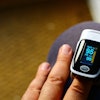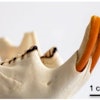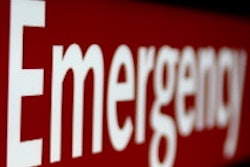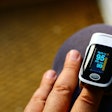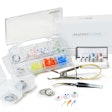
State budgets already strained by the recession are shouldering an extra burden to cover expensive emergency room (ER) treatment for toothaches and other avoidable dental ailments, according to a new report by the Pew Center on the States.
"A Costly Dental Destination" estimates that preventable dental conditions were the primary reason for 830,590 ER visits by Americans in 2009, a 16% increase from 2006. States can reduce hospital visits, improve oral health, and reduce costs by making modest investments to increase access to preventive care, the report concludes.
— Shelly Gehshan, Pew Children's
Dental Campaign
Most dental-related ER visits stem from the difficulties that underserved populations face while trying to get regular preventive care from dentists and other types of providers. In 2009, 56% of Medicaid-enrolled children received no dental care, including a routine exam, the report noted.
The report cited a Louisiana ER physician who said earlier this year that he usually sees at least one dental emergency case per shift, calling the situation a sign that the U.S. dental system is failing to reach many who need care.
The problem is widespread, according to Pew:
- California: More than 83,000 emergency visits in 2007 for preventable dental problems.
- North Carolina: More than 69,000 trips to ERs in 2009 due to teeth or jaw disorders.
- Illinois: Nearly 77,000 dental visits to Chicago's hospitals from 2008 to 2011.
- Florida: More than 115,000 dental-related ER cases in 2010.
- New York: A 32% increase in ER care for young children with preventable dental problems.
- Maine: Dental problems were the top reason Medicaid enrollees and uninsured young people visited hospital ERs in 2006; abscesses or other dental problems were responsible for 3,400 emergency visits.
- Oregon: A 31% increase in dental ER cases among Medicaid recipients during the last three years.
- Arizona: 46% of ER visits for dental care were made by Medicaid enrollees in 2005.
- Florida: About one-third of ER dental visits in 2010 were paid for by taxpayers through the Medicaid program.
- Washington: A trip to the ER was the first "dental visit" for one in four children overall and for roughly half the children younger than 3-and-a-half years old. More than 50 hospitals found that during an 18-month period between 2008 and 2009, residents made more than 23,000 visits to ERs for toothaches or other dental problems. Among the uninsured, patients with dental disorders were the most frequent ER visitors.
- Tennessee: Hospitals had more than 55,000 emergency visits due primarily to teeth or jaw disorders. The conditions were responsible for roughly five times as many ER trips as were burns.
- Utah: Hospitals received more than 8,700 ER visits in 2009 from patients with dental or jaw disorders.
- Ohio: Nine hospitals received 8,760 ER visits in 2009 from Medicaid-enrolled or uninsured patients suffering dental problems.
- Kansas: Hospitals reported more than17,500 visits to emergency facilities due to dental-related problems in 2010.
- Nevada: Health officials estimated the state's hospitals received 6,431 ER visits in 2005 due to decay, gum disease, or abscessed teeth at a cost of nearly $4 million.
- Minnesota: Between 2004 and 2005, seven hospitals received more than 10,000 ER visits for dental ailments.
- Rhode Island: 864 people younger than age 21 were treated on average at an ER for a primary dental-related condition each year between 2005 and 2009.
ER costs substantial
A study of caries-related ER visits in 2006 found that treating 330,000 cases cost nearly $110 million, according to the Pew report (Journal of Evidence Based Dental Practice, December 2010, Vol. 10:4, pp. 212-222). For example, dental-related, emergency hospital visits in Florida produced charges exceeding $88 million in 2010, the report said.
"The care provided in an ER is much more expensive, and it generally doesn't solve dental problems," said Shelly Gehshan, director of the Pew Children's Dental Campaign. "Most hospital ERs are not staffed with dentists, and the medical personnel who work there are not trained to treat the underlying problems of patients with untreated dental issues."
And when severe caries-related problems require hospitals to use general anesthesia, it results in particularly large bills. The problem is serious enough that Michigan Gov. Rick Snyder told legislators last year that poor oral health is a reason for "inappropriate use of emergency rooms," the Pew report noted.
The average cost of a Medicaid enrollee's inpatient hospital treatment for dental problems is nearly 10 times more expensive than the cost of preventive care from a dentist, according to the report.
The access problem is driven by multiple factors, including a shortage of dentists in many areas and that many dentists do not accept Medicaid-enrolled children. In 2008, fewer than half of the dentists in 25 states treated any Medicaid patients, according to a report from the U.S. Government Accountability Office.
One study estimates there are 82 million underserved Americans -- a need far exceeding the capacity of clinics, which provide dental services to approximately 3.7 million people annually, the Pew report noted. Roughly 47 million Americans live in areas that are federally designated as having a shortage of dentists, a key reason why dental care remains the greatest unmet health need of children, the report said. A study commissioned by Delta Dental projects that by 2019, there could be 7,000 fewer dentists practicing in the U.S. compared with the number working in 2009.
Minorities have a particularly hard time getting dental care, according to the Pew report. A recent survey showed that 45% of Hispanics lack dental insurance.
Cost-effective solutions
But there are some cost-effective solutions that could help improve access to preventive dental care and save taxpayer dollars, according to Pew:
- Invest in dental sealants, expand water fluoridation, and provide incentives for pediatricians to offer basic dental services
- Address the dentist shortage by licensing new types of practitioners who work under a dentist's supervision and reach more children who aren't getting care
- Encourage more dentists to participate in Medicaid by keeping reimbursement rates high enough to cover the cost of care
According to Pew, data from 2010 showed that seven states had no school-based sealant programs to reach vulnerable kids: Hawaii, Missouri, Montana, New Jersey, Oklahoma, South Dakota, and Wyoming. Meanwhile, 21 states and the District of Columbia imposed "unnecessary hurdles" on sealant programs for low-income children because they require that children be examined by a dentist before sealants can be applied by dental hygienists, who are the primary practitioners in school-based sealant programs, the report said.
To solve the dentist shortage, some states -- California, Kansas, Maine, New Hampshire, and Washington -- are exploring new types of practitioners to provide quality, routine dental care, Pew noted. Dental therapists are serving the needs of Alaska native tribes, and similar professionals will soon be licensed in Minnesota, the only state with a law authorizing them. A 2010 evaluation of Alaska's dental therapists determined that they were providing safe, competent care that earned high levels of patient satisfaction.
Licensing new types of dental practitioners or expanding the scope of existing professionals can allow states to ensure access to care for more children in underserved communities, the study concluded.
"The bad news is that states are paying a hefty price at a time when they can least afford it," Gehshan said. "The good news is they can make modest investments now that will improve access to care and save them money down the road."
